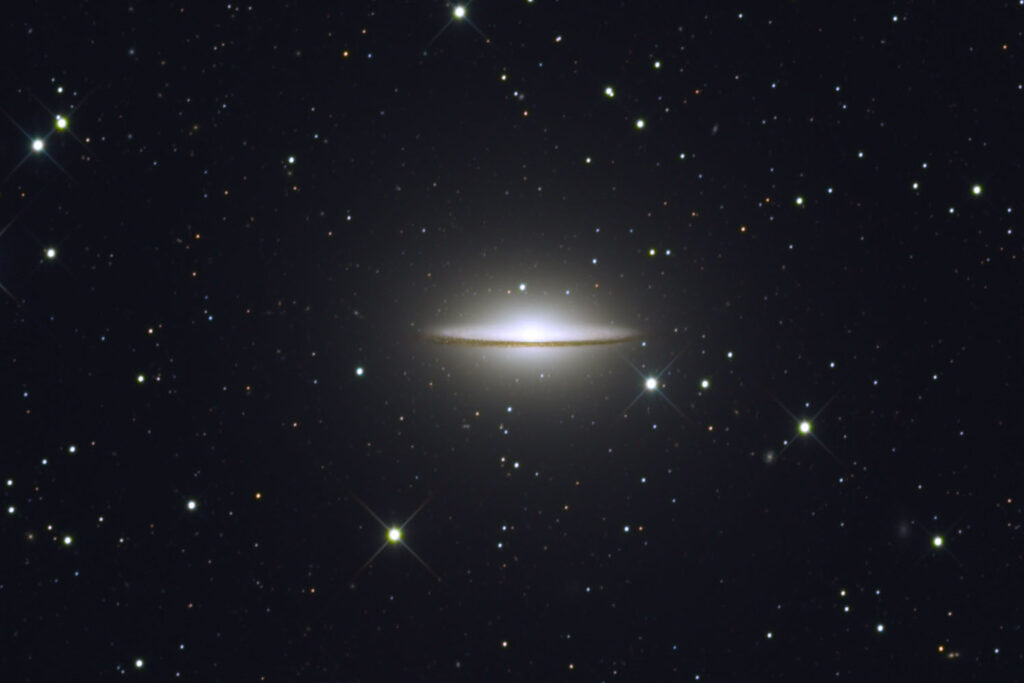Messier 104
The Sombrero Galaxy. Spiral Galaxy, Virgo
- Description
- Technical
- Links
The Sombrero Galaxy (also known as Messier Object 104, M104 or NGC 4594) is a spiral galaxy in the constellation borders of Virgo and Corvus, being about 9.55 megaparsecs (31.1 million light-years) from our galaxy, within the local supercluster. It has a diameter of approximately 15 kiloparsecs (49,000 light-years), 30% the size of the Milky Way. It has a bright nucleus, an unusually large central bulge, and a prominent dust lane in its outer disk, which is viewed almost edge-on. The dark dust lane and the bulge give this galaxy the appearance of a sombrero hat. Astronomers initially thought that the halo was small and light, indicative of a spiral galaxy, but the Spitzer Space Telescope found that the dust ring around the Sombrero Galaxy is larger and more massive than previously thought, indicative of a giant elliptical galaxy. The galaxy has an apparent magnitude of +8.0, making it easily visible with amateur telescopes, and it is considered by some authors to be the galaxy with the highest absolute magnitude within a radius of 10 megaparsecs of the Milky Way. Its large bulge, its central supermassive black hole, and its dust lane all attract the attention of professional astronomers.
Telescope: ASA N16 f3.6
Mount: Astro Physics 3600GTO “El Capitan”
Camera: SBIG STL-11000M
Guider: SBIG STL-Internal
L: 37×5 mins = 185 mins, R: 20×5 mins = 100 mins, G: 19×5 mins = 95 mins, B: 23×5 mins = 115 mins
Total Imaging Time: 8h 15m
Data Imaged remotely over 10 nights during January & February 2011.
Data acquisition & Processing by David Churchill.
None

